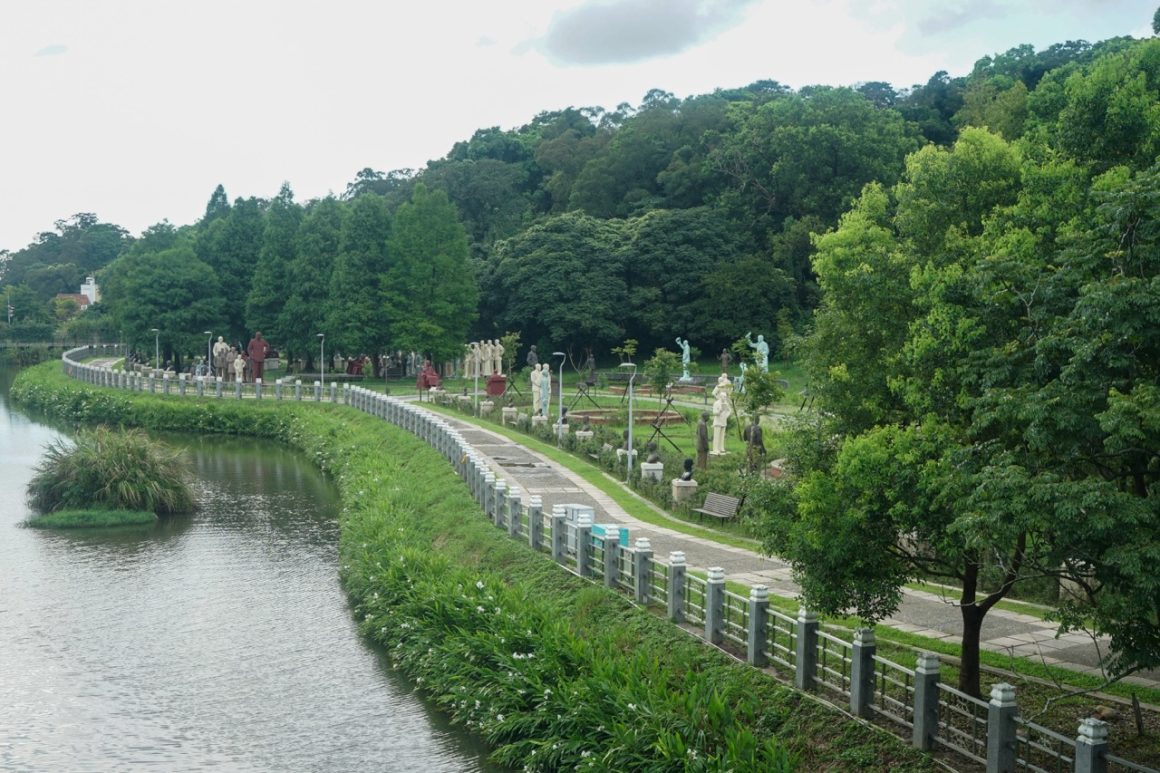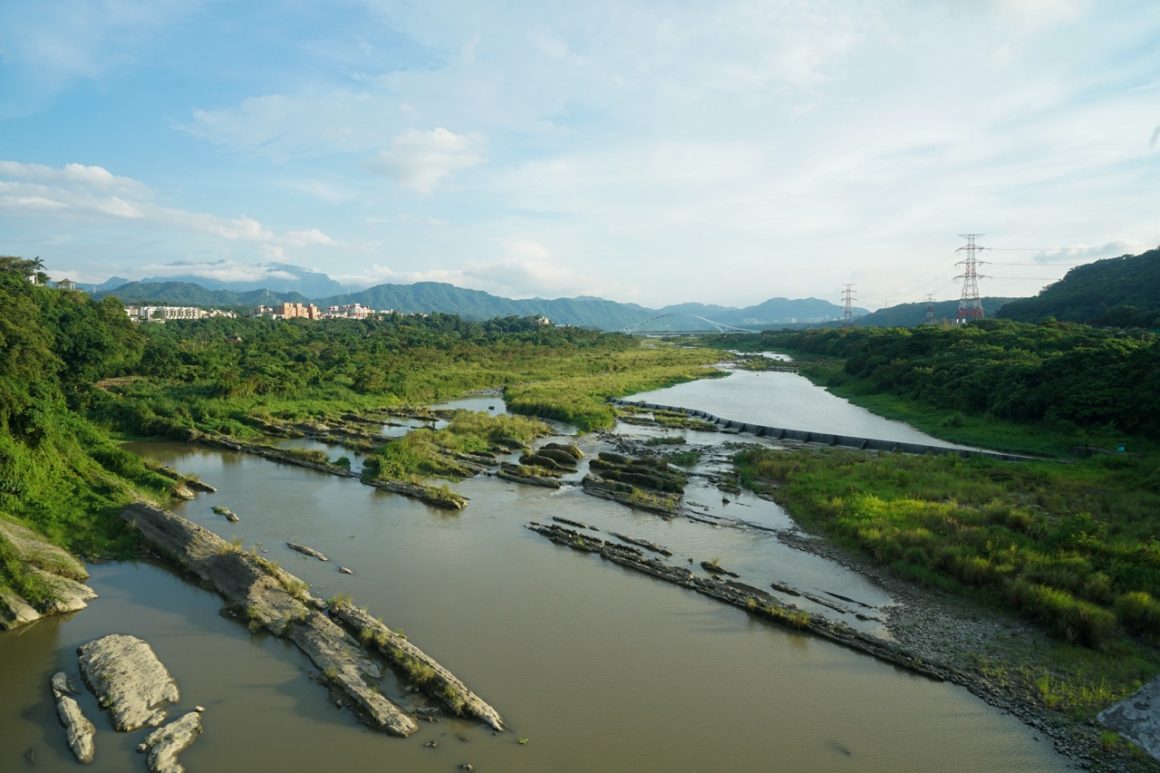Author Chris van Laak
Photographer Chris van Laak
Editor Chih Yi Chen
Many countries have had leaders that they revered, loved and worshiped when they were in power (or that they feared so much that they acted as if they did), but who have since fallen from favor. There are many different ways in which countries can deal with their past dictators, kleptocrats and despots. Some handle it better than others.

Taiwan is not unique in having a mausoleum for its most notorious former president, complete with an honor guard in perfectly white, starched uniforms. As is the case in other countries that had dictators, kleptocrats or despots, some people on the fringes of society still revere, love and worship him. Those who have the power to order the honor guard removed, the mausoleum shut and his remains moved to a less conspicuous place, refrain from doing so to appease them. Why would you rock the boat? Is a little bit undue dictator worship really the nation’s most pressing issue? No, it is not.
This way of thinking, which I have conveniently put into the mouths of “those in power” and which shall not be discussed here at length, might indeed be warranted when it comes to the Cihu(慈湖) Mausoleum, the “temporary” resting place of Chiang Kai-shek (蔣介石). When I visited the place in Taoyuan’s Daxi District(桃園大溪) last month, it was so eerily empty that it seemed as if Taiwanese, as well as the country’s tourism industry, had simply forgotten about it.


In the changing of the guards ceremony, more guards (five) were involved than spectators (four). The three others who attended didn’t show any signs that they worshiped a figure of the past that might pose a threat to Taiwan’s future. They seemed rather bored.
Temporarily interred or simply forgotten?
Chiang Kai-Shek ruled over the Republic of China, which had included Taiwan since 1945 (but soon became synonymous with it), until he died in 1975. For most of those years, he was at the helm of a military regime that did not accept any opposition. It executed tens of thousands of suspected dissidents and tried to eradicate all sentiment against it—by, for example, controlling what people read, heard on the radio and saw on TV. In school, too, Taiwanese learned to revere, love and worship Chiang Kai-shek.
The “generalissimo” was the one-man bulwark that ensured “communist banditry” would not take over all of China, even if the remaining “free China” was just a small island that had been a Japanese colony until recently and that had never been fully integrated into China anyway.
When Chiang died in office, aged 88, his remains were interred in a black marble sarcophagus at Cihu, his favorite among his 13 official residences in Taiwan. He had ordered it before his death; he had also ordered that his remains be moved to a final resting place near his ancestral home in China’s Zhejiang Province once “the rest of China is freed.”
Morbid beauty
The Cihu Mausoleum is a very interesting place to visit. One caveat: You need the same morbid fascination with Taiwanese history that I have to enjoy it as much as I did. To me, everything seemed significant, from the oversized, empty parking lot in front of the main gate, to the overly friendly attitude of the staff.

If you don’t have the same morbid fascination, however, you might find the place simply beautiful. It indeed is: A surprisingly modest courtyard house overlooking a small lake amid forested hills. It’s a great place to retreat from the daily grind. It’s also easy to imagine why it was the favorite of the one who was now lying inside in his sarcophagus—unreachable to me because visitors can no longer enter the burial chamber. A group of independence activists had thrown paint at the sarcophagus in 2018, prompting the chamber’s “temporary” closure.
When I visited, I couldn’t even enter the building due to maintenance work.
Different times
Nevertheless, I felt removed from the world. Everything seemed far away; everything seemed long ago, even 2018. Why would anybody choose this place for a symbolic, political act that should be seen by more than, let’s say, four people?
To my surprise, photos uploaded to Google Maps in 2017 show large crowds at the changing of the guards’ ceremony, aligning, to some extent, with what Wikipedia says about the place: In the past, “visitors would line up hours for the chance to pay their respects to Chiang Kai-shek, either by bowing three times or saluting before the sarcophagus.”
Staff at the mausoleum, however, told me “There are unfortunately few visitors these days.”
Maybe the Wikipedia article needs an update written by someone who’s not motivated by dictator worship.
Chiang’s last defenders
One of the last times a visit to the mausoleum got much media attention was when Ma Ying-jeou (馬英九), then the president-elect, made a speech at the site in 2008.
Those were different times; Taiwan had become a democracy, but veneration of Chiang was still quite common, especially among aging KMT members and supporters. Trying to speak to the nation as a whole though, Ma did not go far beyond saying that Chiang “was part of the nation’s past.”

His tone was consolatory, which surprised me, given that changes made during the administration of Ma’s predecessor, Chen Shui-bian (陳水扁), to the Chiang Kai-shek Memorial Hall(中正紀念堂) in Taipei, had caused great controversy. The KMT and its supporters were appalled when the place in front of the monument was renamed Freedom Square and the oversized statue of their former leader had to share the main hall with an exhibition about Taiwan’s democracy movement.
During eight years under Chen Shui-bian of the Democratic Progressive Party of Taiwan(DPP;民主進步黨), which had emerged from opposition groups against authoritarian KMT rule, Taiwan had also begun removing statues of the former dictator from public places. Destroying them was a politically too costly move, so many of them were disposed of at the Cihu Mausoleum.
Too many Chiangs
While the KMT opposed the nationwide removal of the Chiangs, the KMT-led township administration in Daxi was happy to receive them. After efforts of then-township mayor Su Wen-sheng (蘇文生) had failed to broker a deal to ship the biggest among them to a proposed Chiang memorial in China’s Zhejiang (yes, this really happened), hundreds of them were placed in the park adjacent to the mausoleum.
To me, it was the highlight of the Cihu trip to walk through an otherwise empty park full of Chiangs—Chiangs greeting each other, Chiangs looking benevolently or authoritatively at each other, Chiangs reading to each other from China’s Destiny (中國之命運), Chiangs with bird droppings on their peanut-shaped heads.

It was an absurd sight; it was as if someone had opened a door to the chamber of unresolved issues that shall not be opened.
Maybe it’s good that Taiwan still has this place of dictator worship. It could, maybe, get rid of the honor guard, but the demons of the past would still be there without it. Maybe Cihu is the reminder that Taiwan needs.













